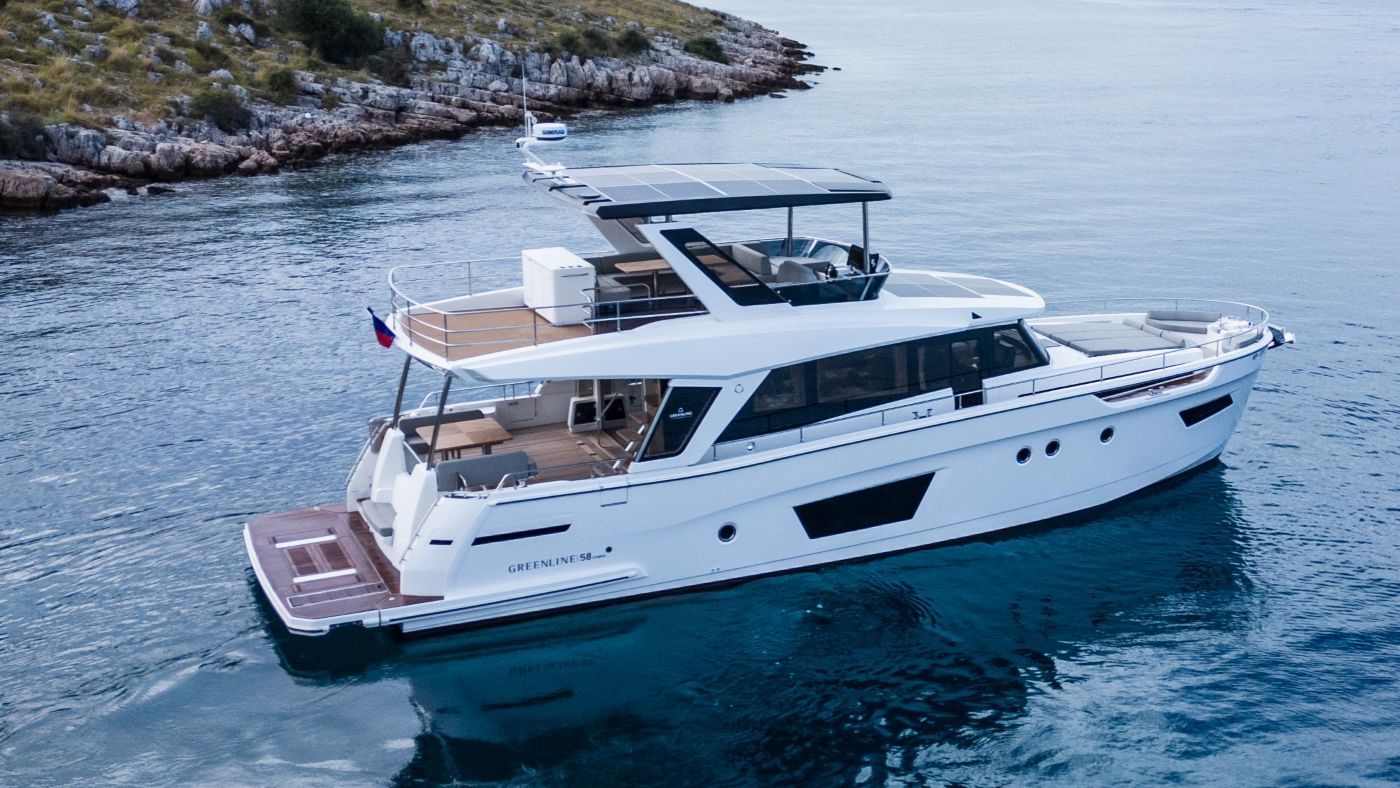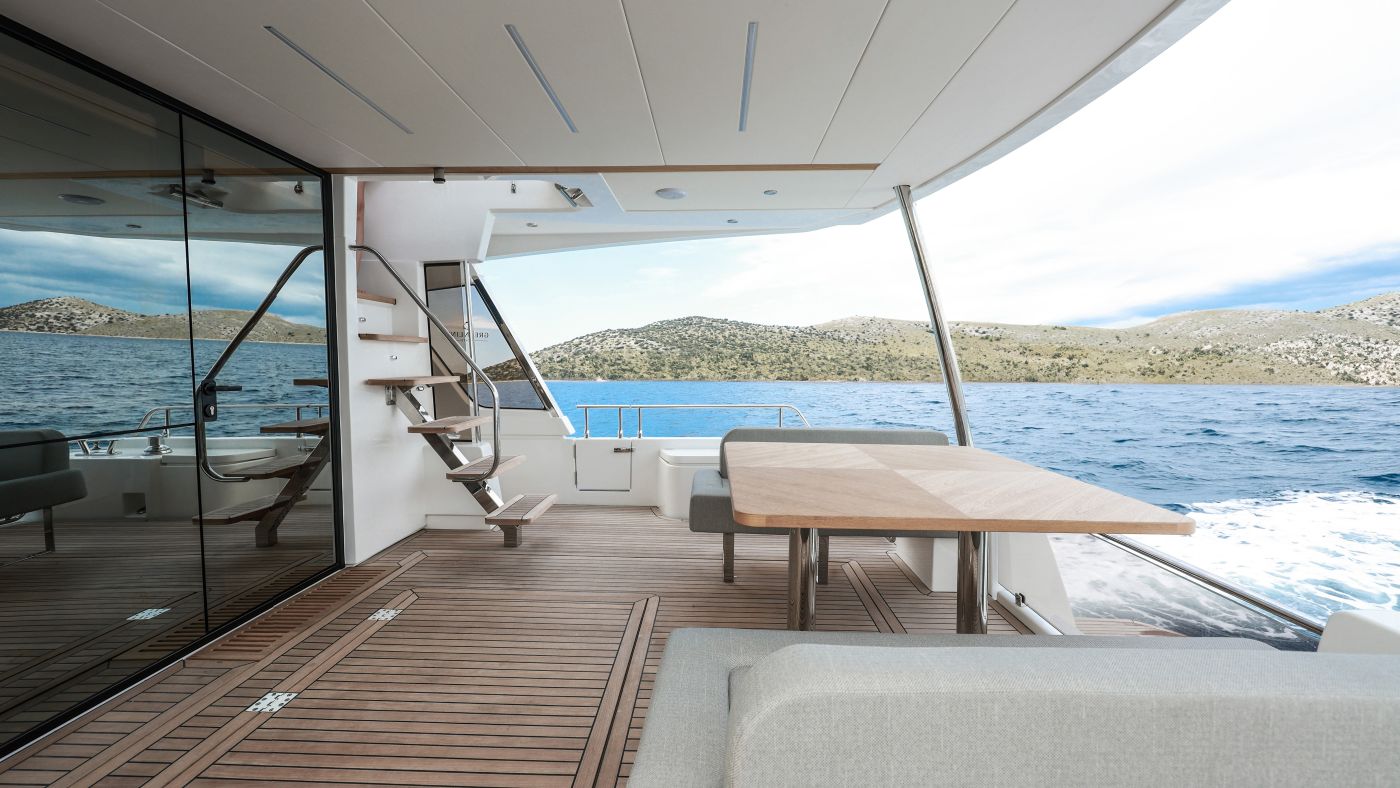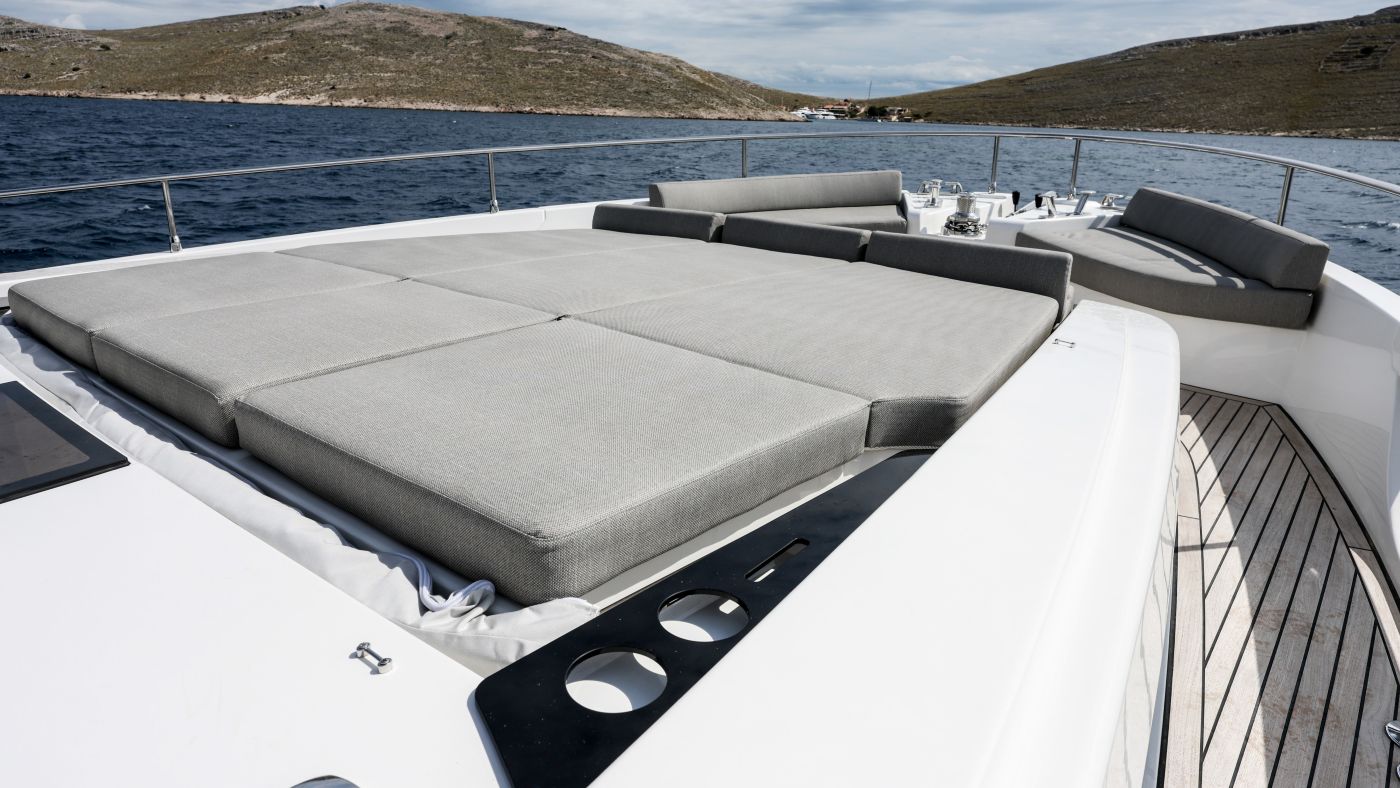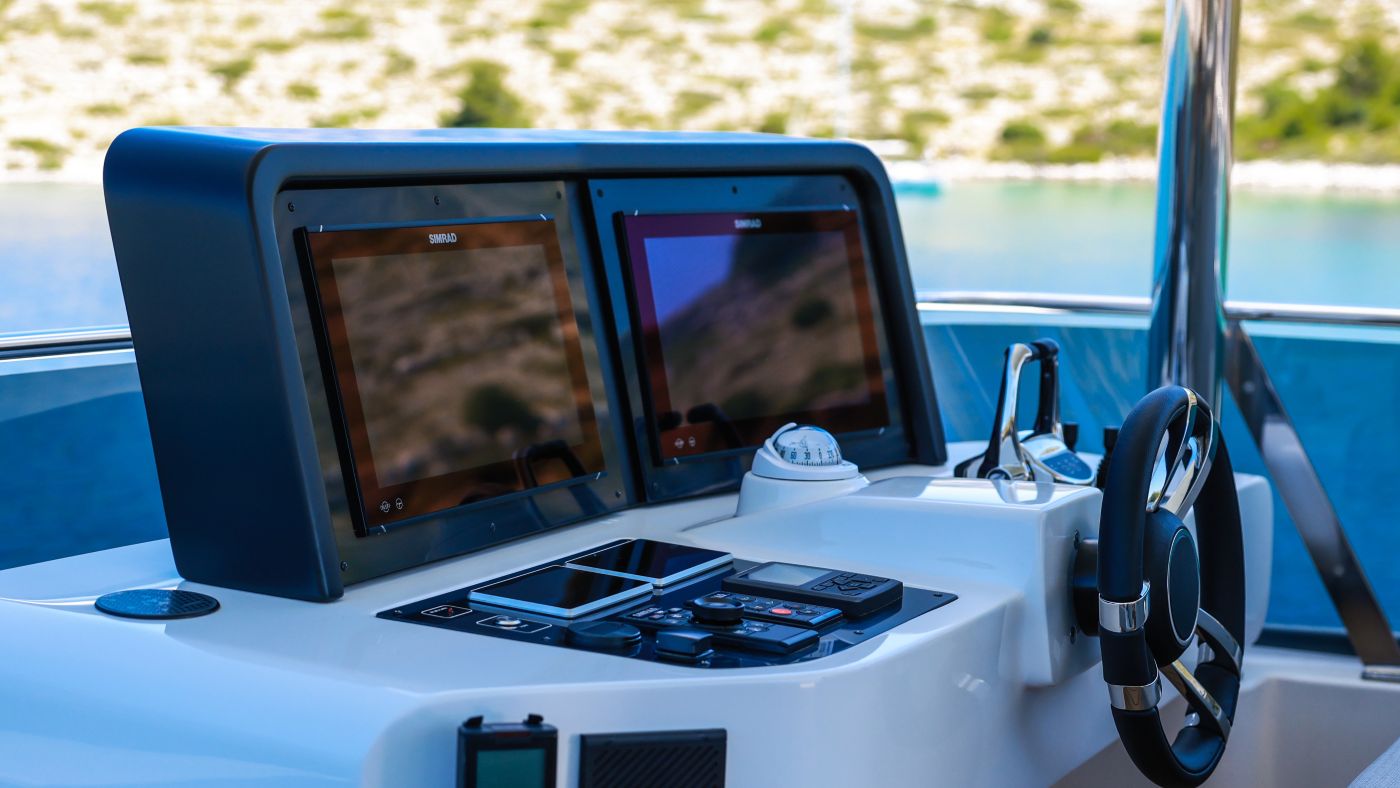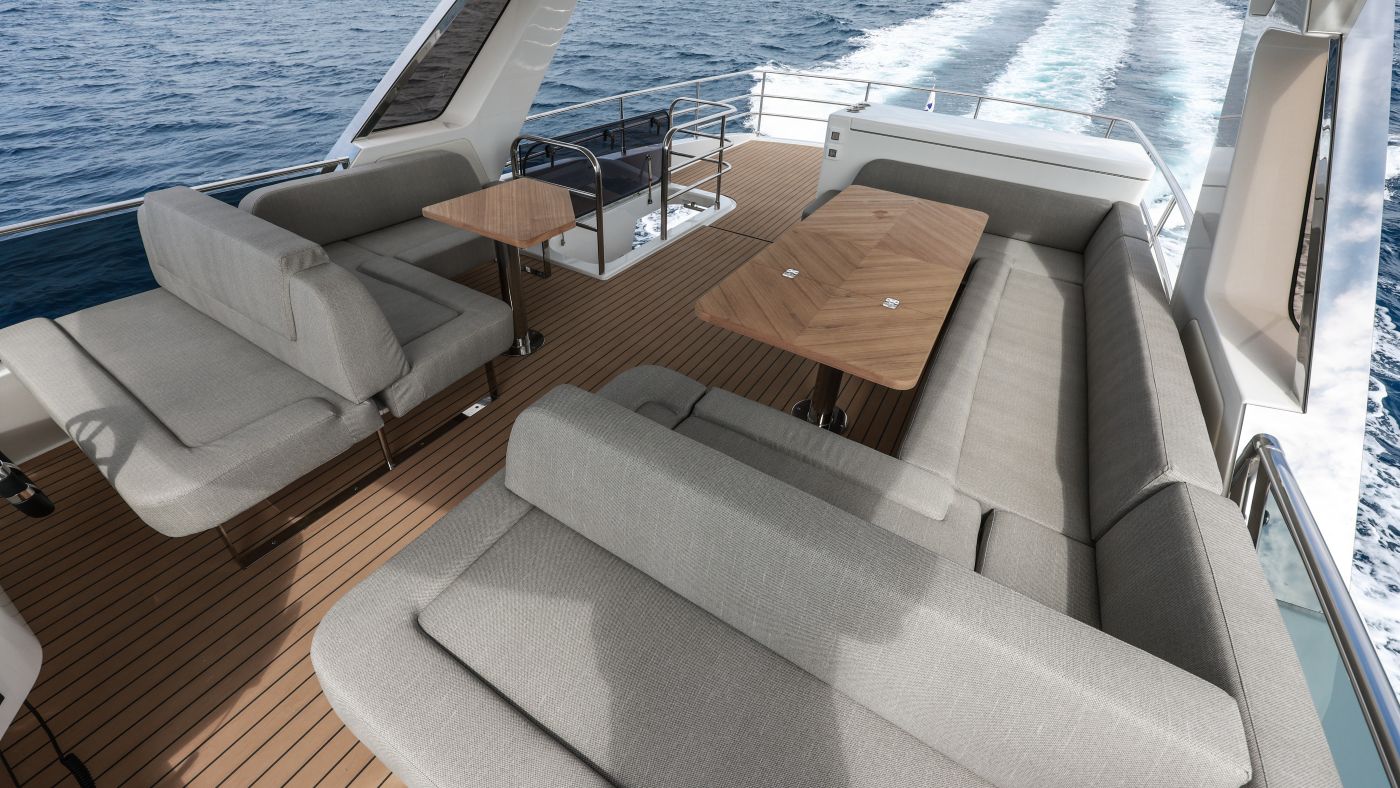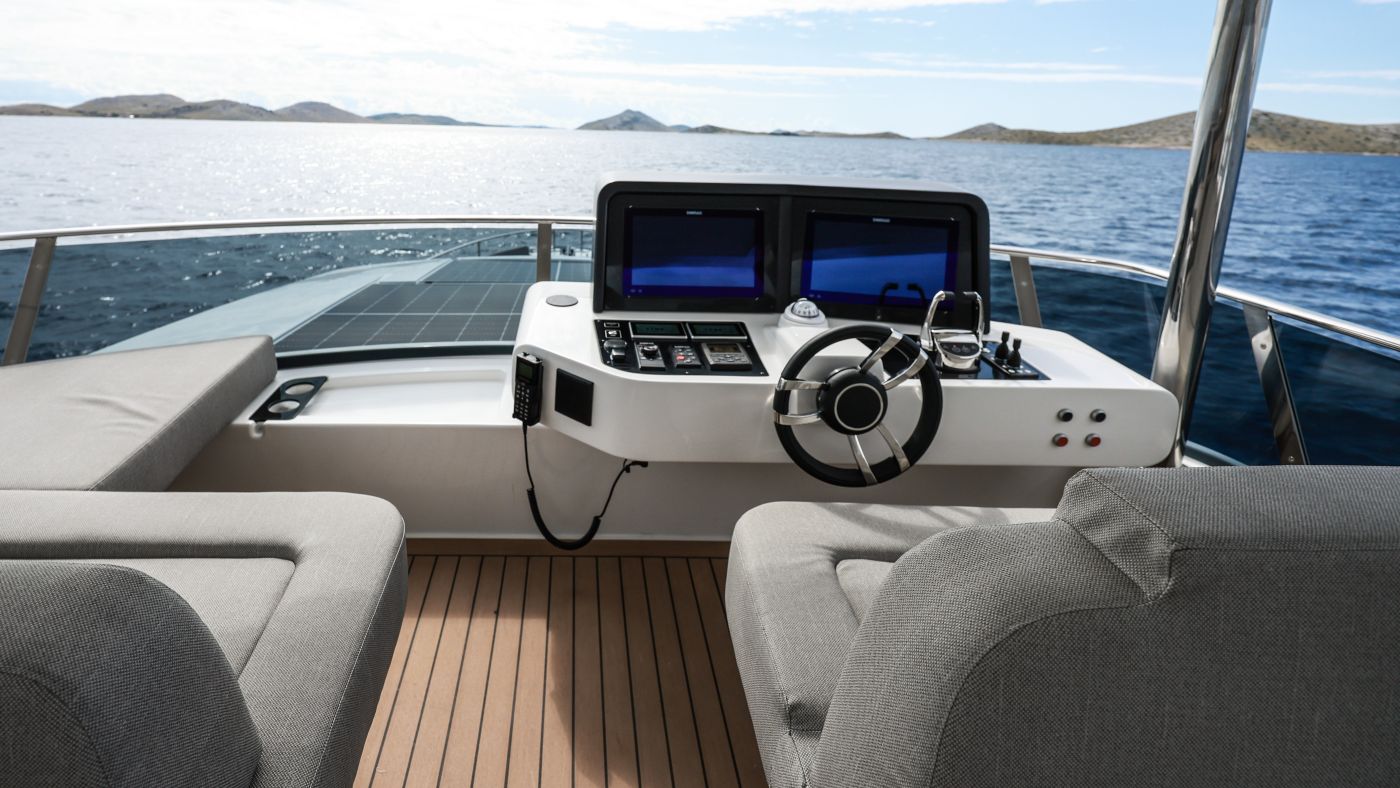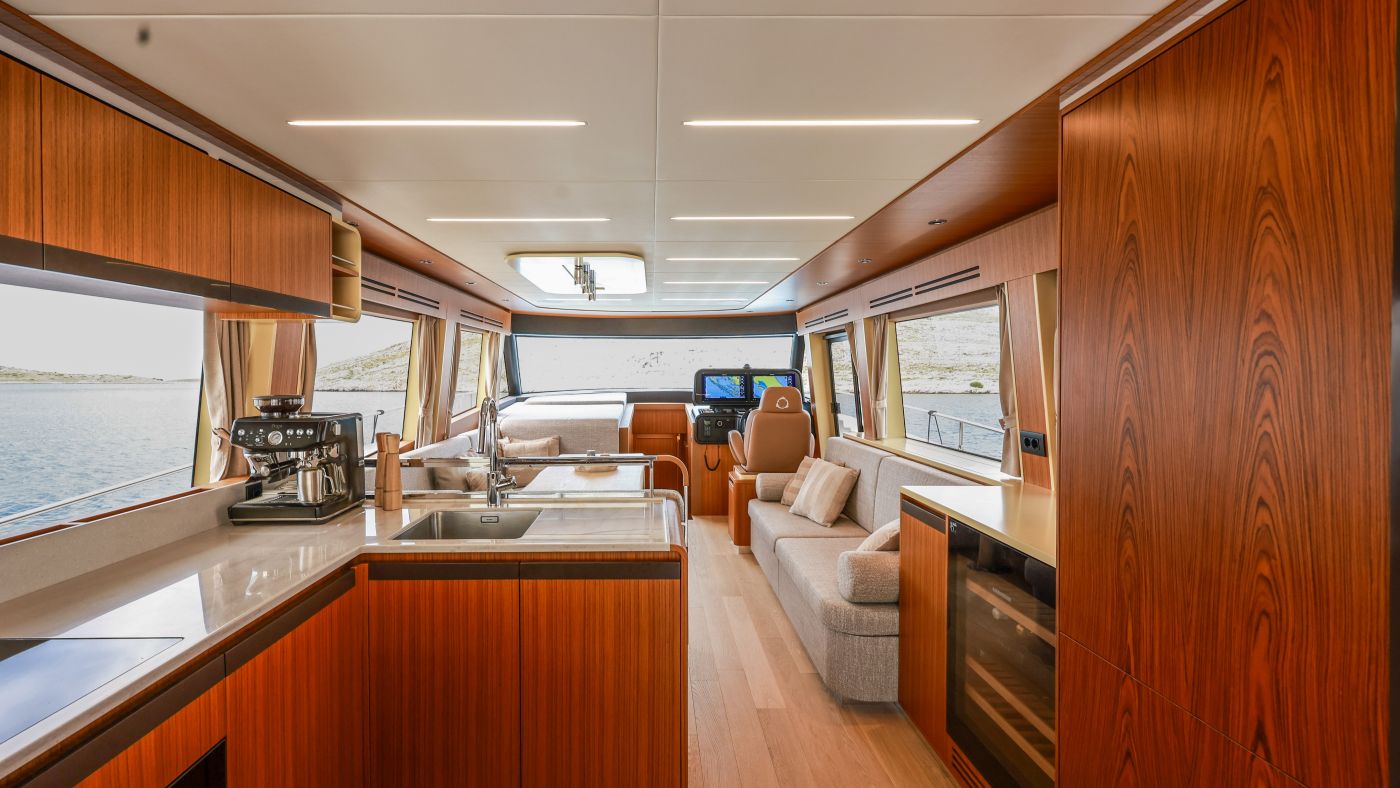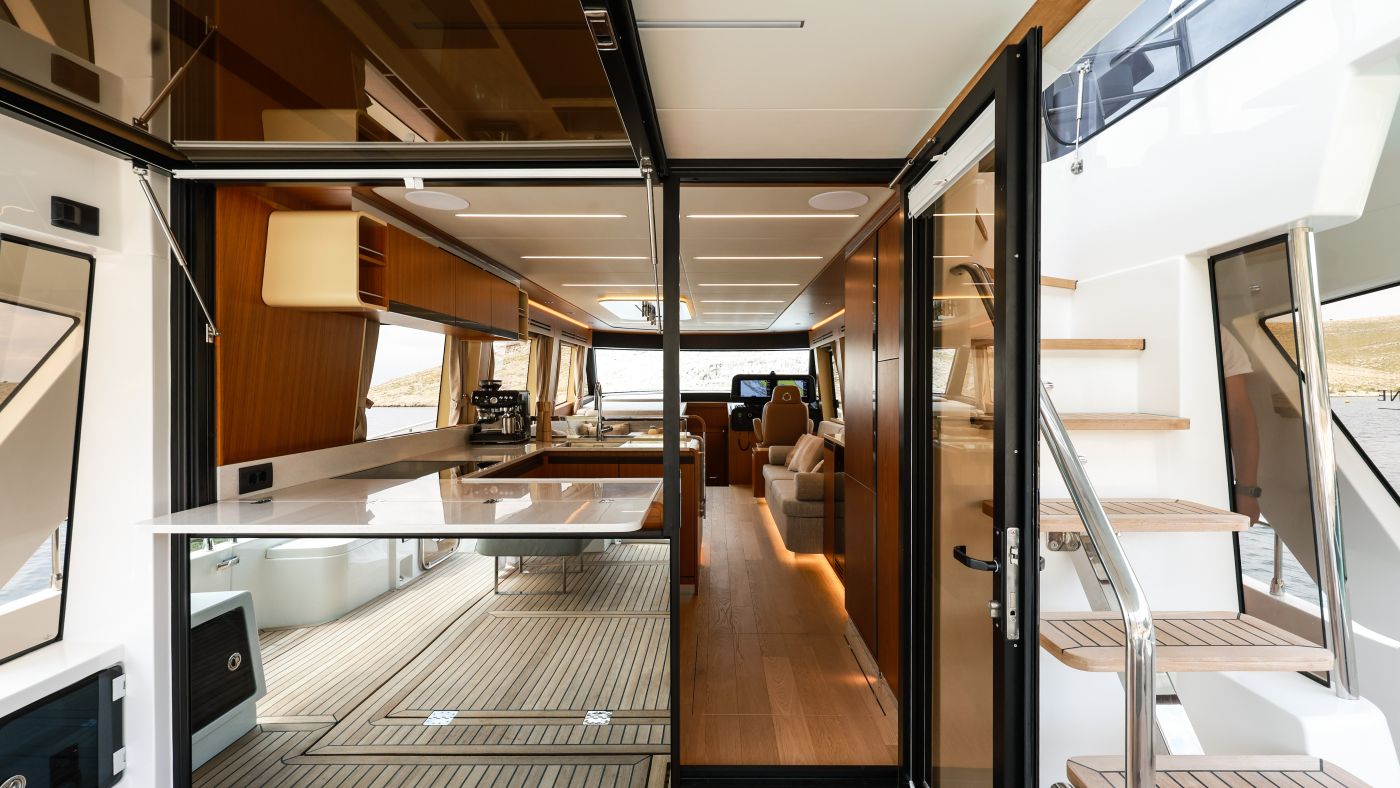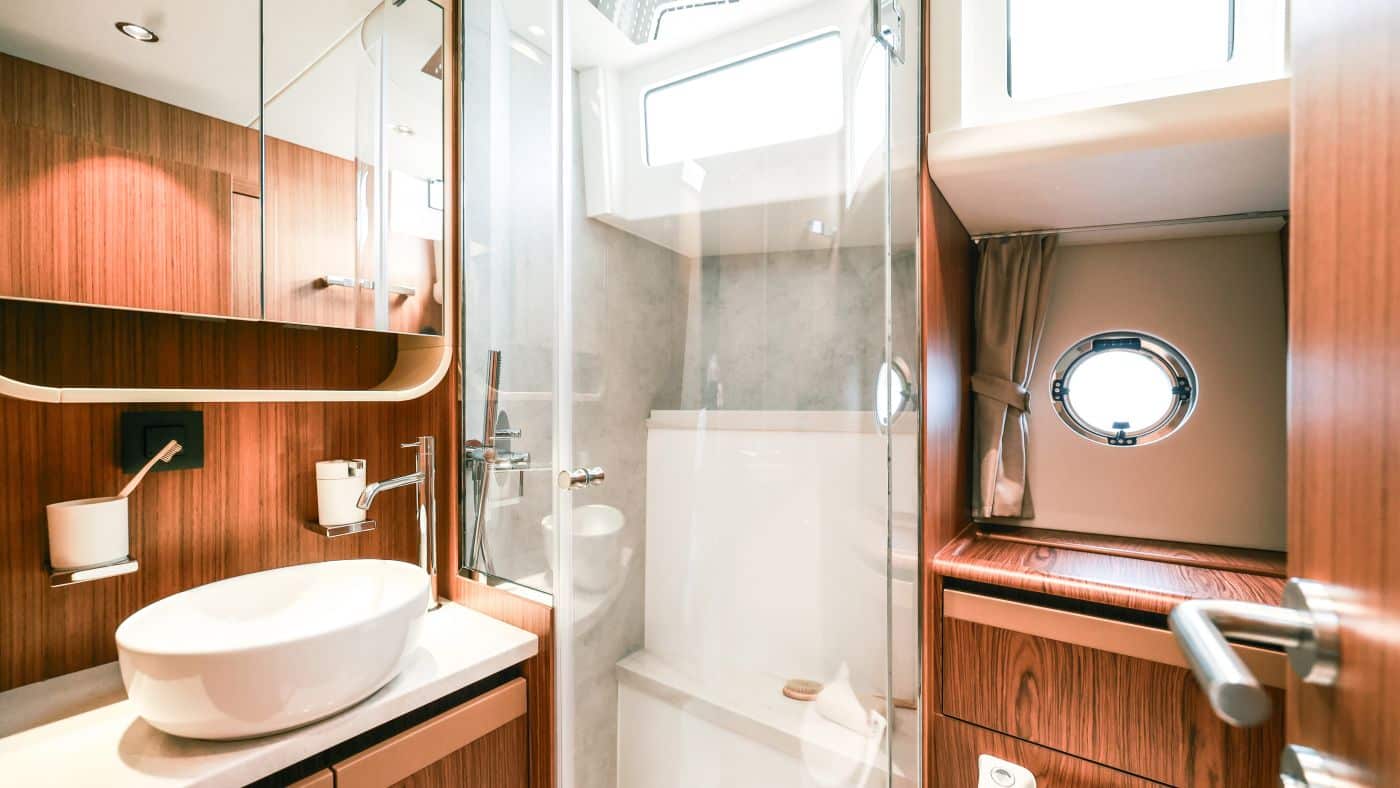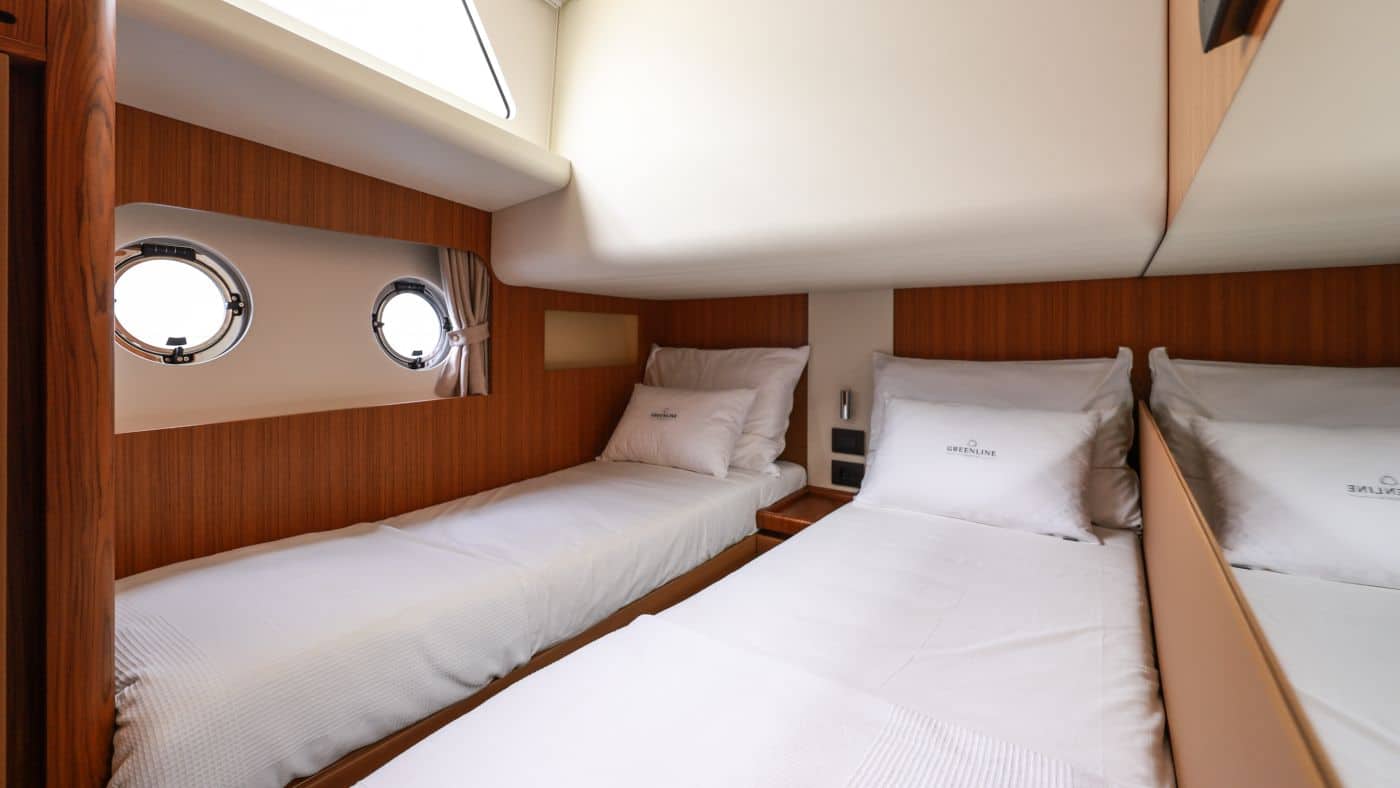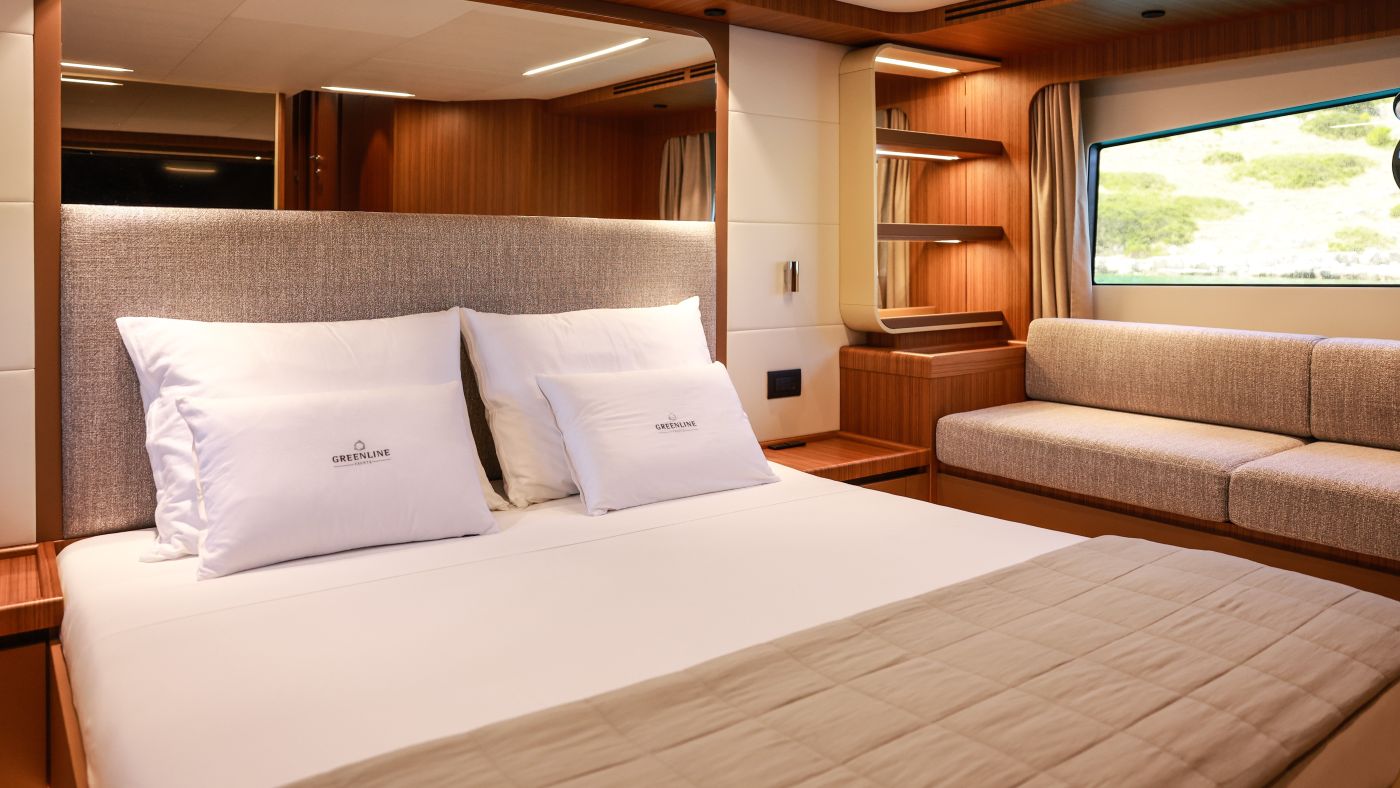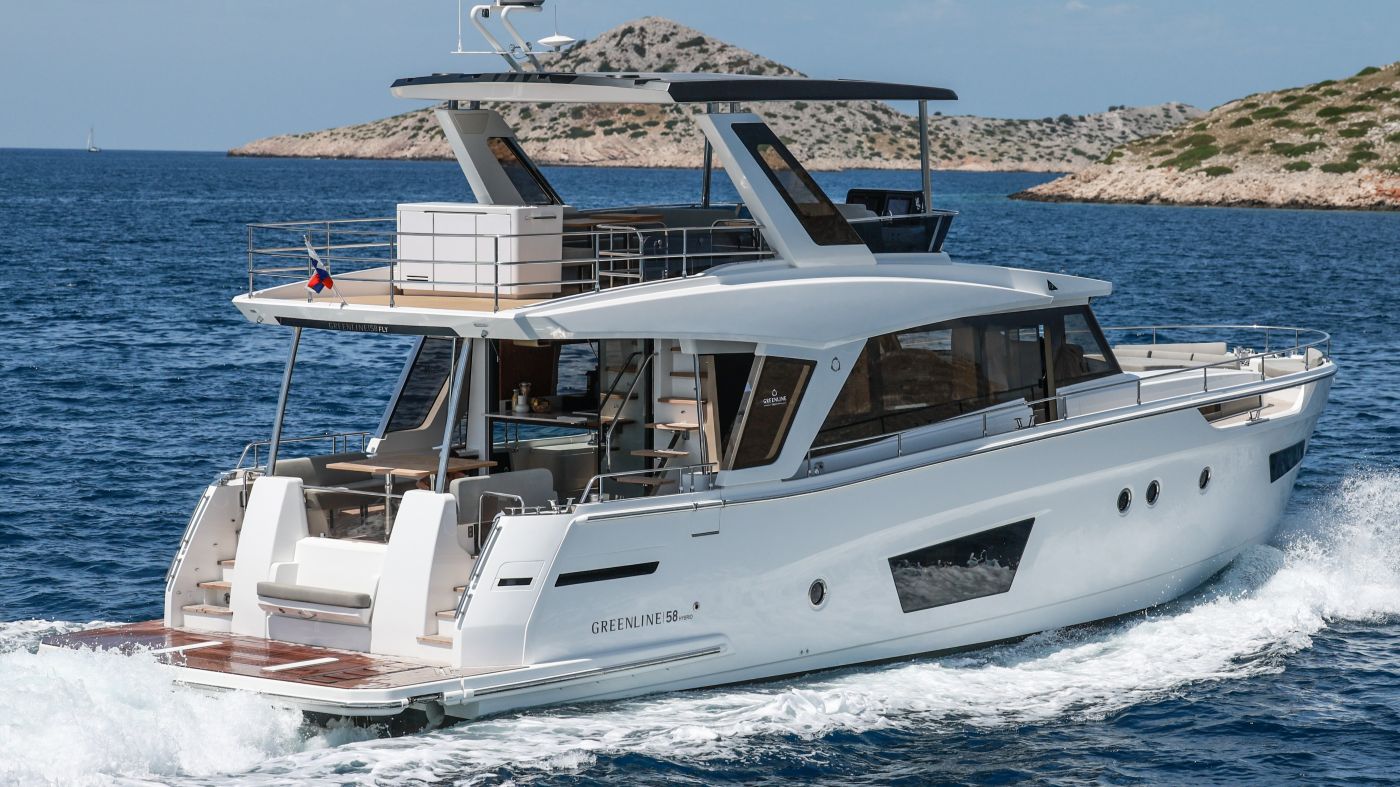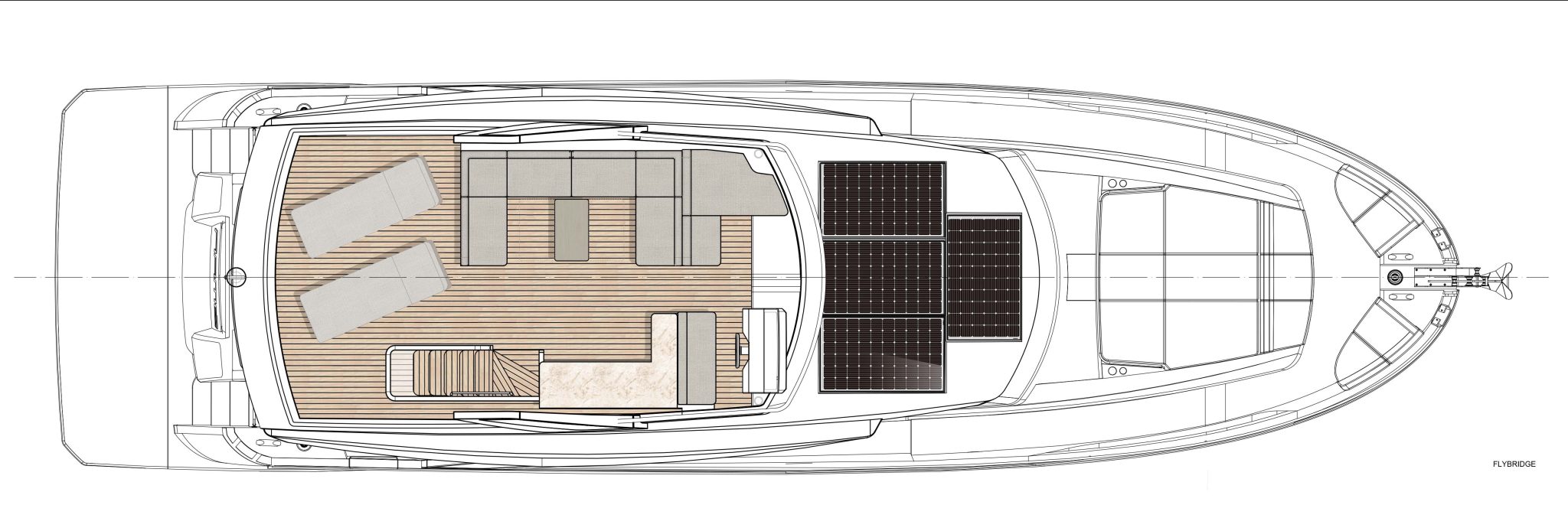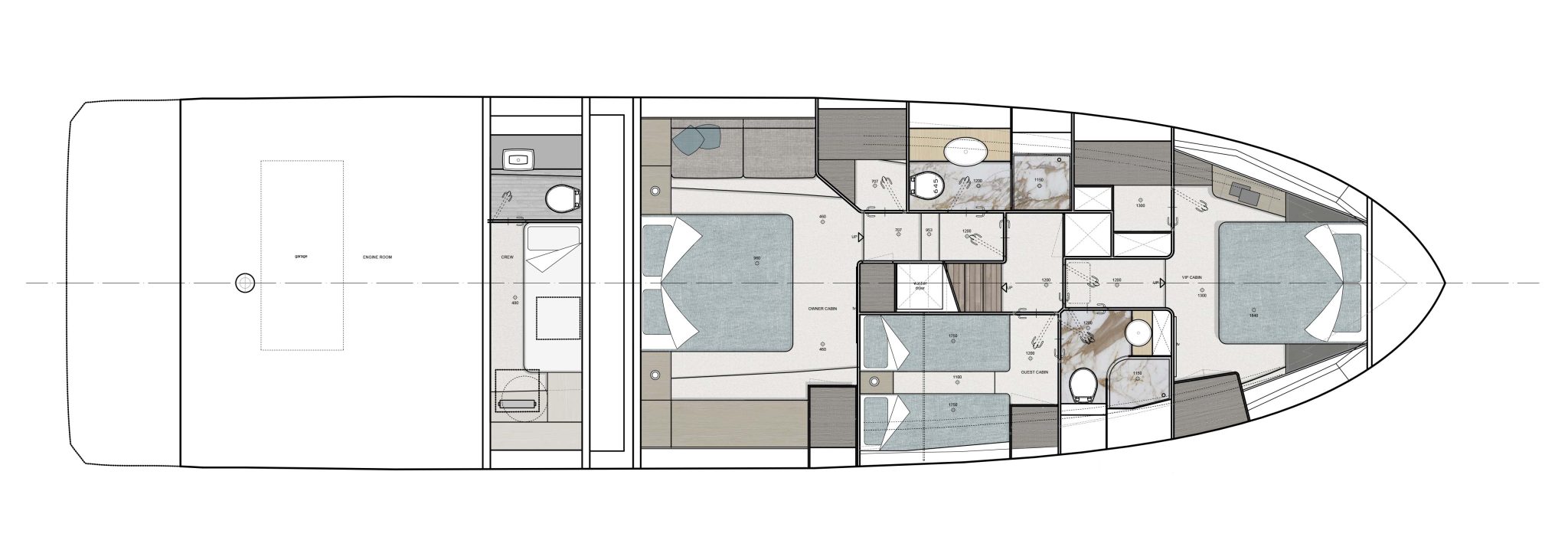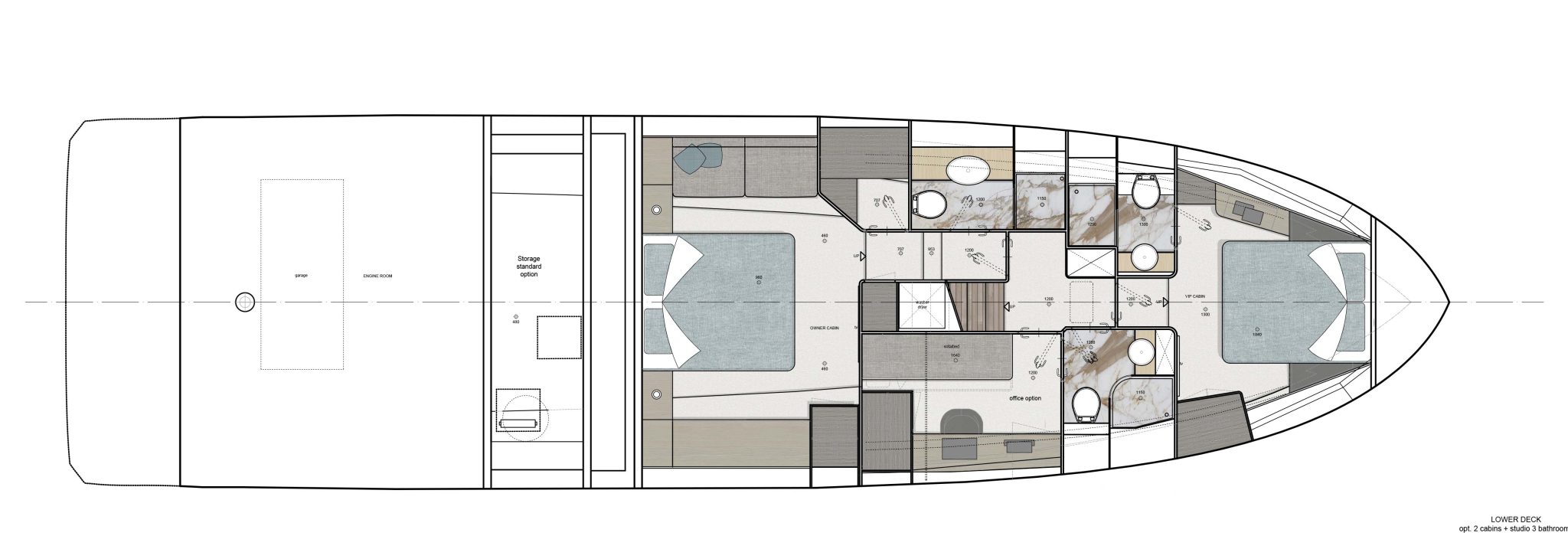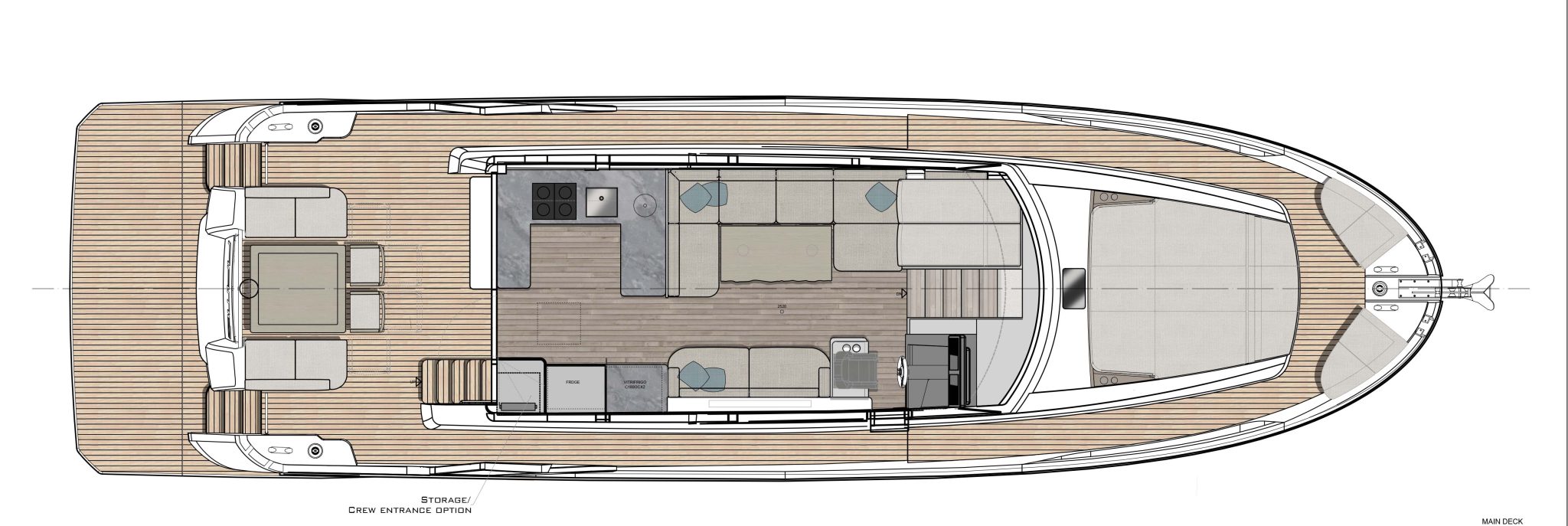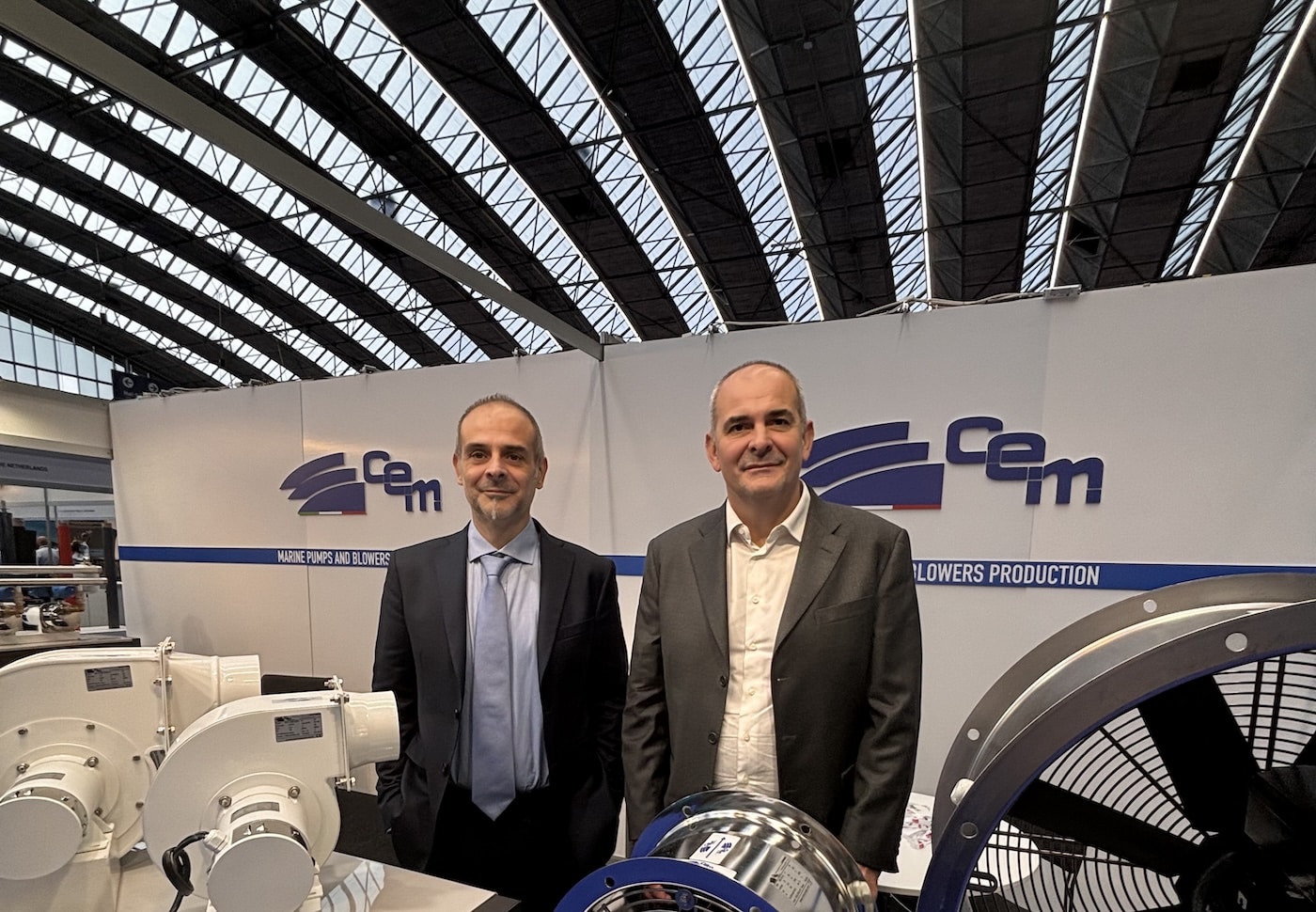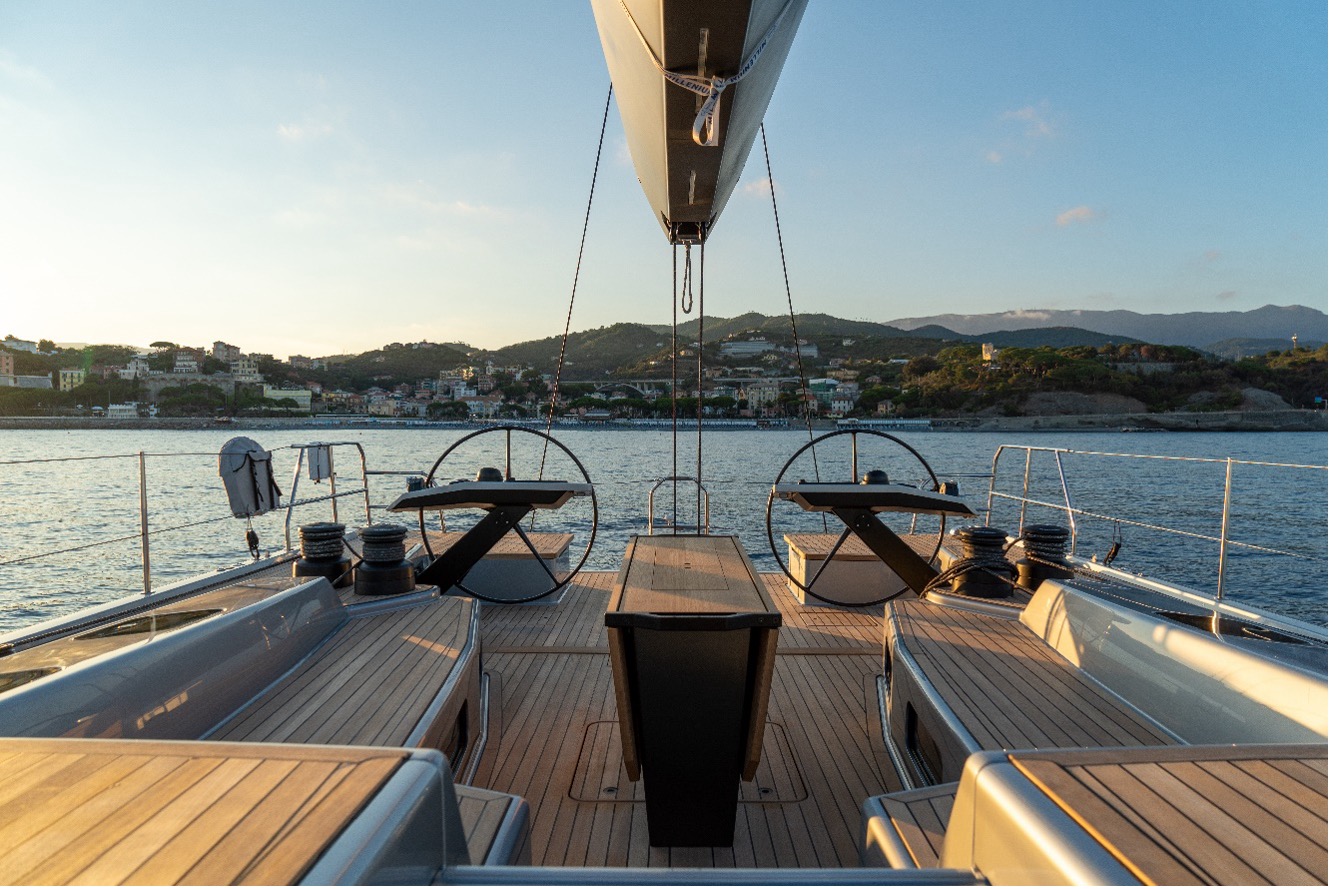GREENLINE 58 FLY HYBRID : nineteen meters of pure, unapologetic style. This is precisely the first stunning impression this model conveys with its harmonious interiors, expansive outdoor spaces, and the ability to cruise in complete silence.
This boat captivates with superyacht-level finishes and truly unique fuel efficiency. As the current flagship of the Greenline fleet, it demonstrates how luxury and ecological responsibility can seamlessly coexist. Thanks to its next-generation hybrid propulsion and carefully curated interiors, emissions are reduced by up to 40% compared to a standard diesel engine. The shipyard in fact, as a pioneer in hybrid propulsion, first introduced this technology to the market in 2008. Years of experience have led to peak onboard efficiency, with the H-Drive 6G hybrid system being the most efficient Greenline Yachts has developed to date.
Exteriors
The retractable bathing platform at the stern has a depth of nearly 2 meters, spacious enough to lay out loungers and chairs for an unbeatable seaside atmosphere. The shipyard has also added a small sofa here, perfect for enjoying a drink right by the water. Like the Coupé version, the main deck at the stern offers an elegant and comfortable multifunctional space, connecting guests with the ocean and surrounding environment. The extra-wide side decks and tall bulwarks provide excellent protection when heading to the bow in rough seas, with grab rails along the path for added safety—especially useful when children are inevitably running from one end of the boat to the other.
The bow section accommodates an impressively spacious sundeck comfortable for three people, along with two side sofas that create a cozy lounge area ideal for chatting and relaxing. Returning to the stern, you can head up to the flybridge, where the shipyard has created another elegance zone, with ample seating and open space everywhere, including an aft terrace that can accommodate two large chaise lounges. The helm station, positioned to starboard, offers exceptional visibility, making maneuvering remarkably easy—even for a 19-meter yacht like the Greenline 58 Fly.
Interior
The large windows and frameless windshield transform the boat’s interior into a bright, open space with a strong connection to the sea. The extra-large galley is positioned aft and can be fully opened to the outer deck thanks to a glass door and a folding window. Spacious and well-equipped with refrigerators, a freezer, induction cooktop, and dishwasher, it offers a good space where it is easy to prepare a special meal.
With a clear view from bow to stern, there are no obstructions, allowing for a truly stunning panorama. Starboard, there are elegant sofas, and to port, a dinette where the table can be raised or lowered for dining, having coffee, enjoying a drink, or relaxing indoors on cooler days. Soft wood tones, refined materials, and onboard comfort make this GREENLINE 58 FLY a true villa on the water.
The materials selected by Greenline Yachts and designer Marco Casali align with the shipyard’s commitment to responsible yachting. Fabrics made from recycled fibers, sustainable woods, and recycled PET foam minimize the yacht’s environmental footprint. What’s more, waste is recycled or used to generate heat.
Lower Deck
Descending a wide staircase, we reach the lower deck, where an atrium gives access to the three cabins. The most stunning of all, the owner’s suite, spans the entire beam of the yacht midship. Generous hull windows allow natural light to flood in and offer a beautiful view of the anchorage. Along with a king-size bed, there’s a sofa, a vanity table, and ample storage spaces, including a walk-in closet.
Such exceptional comfort calls for an equally spectacular bathroom, and the master suite doesn’t disappoint. Designer faucets and elegant porcelain contrast beautifully with the warm wood finishes and the graceful curves of the cabinetry.
Forward is another spacious VIP double berth, also with a private bathroom and an elegant wardrobe. Between the two, to starboard, is a flexible third cabin that can be configured as a twin for children or as a double for friends, with a private bathroom in both cases. The luckiest owners, who can spend more time onboard, might also convert this cabin into an office or a TV lounge.
Hybrid Propulsion and Sea Trial
Greenline Yachts has always paid special attention to sustainability, and the Greenline 58 Fly Hybrid is no exception. Indeed, it uses the same “superdisplacement” hull design as the smaller models in the range, delivering optimal performance at various speeds—from a cruising pace of 6 knots up to a top speed of 29 knots.
The H-Drive 6G is Greenline’s most efficient unit, with enhanced performance, an improved user interface, and an innovative low-voltage electric motor that allows the Greenline 58 Fly Hybrid an impressive range of 20 nautical miles in silent electric mode at speeds up to 6 knots.
Moreover, the shipyard has equipped this model with a 4kW solar system, which, while offering a slight range extension, primarily provides the advantage of spending extended days and nights at anchor without needing to power up a noisy generator. By combining high-quality Greenline lithium polymer batteries with up to 20kWh of solar input, you can enjoy up to three days at anchor without using the generator—almost unlimited autonomy if air conditioning isn’t required. “Our unique ‘responsible yachting’ approach gives owners the flexibility to choose between speed when it’s needed and optimal efficiency for shorter distances – said owner and general manager Vladimir Zinchenko – The Greenline 58 Fly Hybrid exemplifies this concept, though it’s also present in all of our yachts. Responsible Yachting is a philosophy that has led us to significantly reduce waste and energy consumption at the shipyard, eliminating paper marketing materials and recycling as much as possible”.
Departing your berth in complete silence with the Greenline 58 Fly is truly an incredible experience. Lines secured, forward gear engaged, and for a moment, I’m astonished by the total absense of silence aboard. The boat moves forward at minimum speed, and it’s almost surreal to maneuver 30 tons over a 19-meter length without a single hum. On the two SIMRAD screens at the helm, I can simultaneously view both internal combustion engine data and electric charging stats, keeping the yacht’s range constantly in check.
Switching between modes (electric/internal combustion or vice versa) is extremely easy—just press a button to switch modes.
This Greenline 58 Fly is equipped with two Cummins 610/715hp engines (Hybrid Drive with two 25 kW electric motors). When the combustion engine is running, the electric motor acts as a generator to recharge the batteries. The entire roof surface of the flybridge and part of the bow deck are covered in solar panels which, in turn, provide additional power for charging and maintenance.
With this configuration, the Greenline 58 Fly has an anchoring autonomy of about 48 hours (with moderate use of air conditioning); after that, a couple of hours of cruising on diesel brings the batteries back to 100%. The panels provide an average of 4kW/h of charging, and on a summer day with 10 hours of sunlight, charging can reach up to 40 kW.
Just outside Vieux Port, I switch on the combustion engine to check the charging parameters. At 600 RPM, our speed is 5 knots, but at this pace, the diesel engine isn’t charging the battery pack. Once we reach 1000 RPM, I see on the right-hand monitor that charging has kicked in, delivering 10 kW/h at a speed of 7.8 knots with fuel consumption around 22–24 L/h. Increasing the throttle to 2000 RPM, the Greenline 58 Fly glides at 15 knots while charging the batteries at 11.5 kW/h.
The sea is very calm today, allowing me to accelerate further effortlessly. At 2500 RPM, we reach 22 knots, with fuel consumption at 138–141 L/h. Onboard comfort remains absolute—the boat is free from vibrations, and the hull performs excellently, staying stable even with multiple consecutive turns.
I turn off the engine to switch to electric mode, reducing my speed to 6 knots. At this speed, the display shows an electric range of about 1 hour, but if I slow to 5 knots, my range doubles.
It’s truly impressive to cruise at 5 knots in complete silence, especially knowing we’re not polluting.
Test Data
RPM | SPEED | CHARGE | CONSUMPTION IN L/H |
600 | 4.8 | – | 9 |
1000 | 7.8 | 10 | 22+24 |
1500 | 10.8 | 8.9 | 41+37 |
2000 | 15 | 11.5 | 80+82 |
2500 | 22 | – | 138/144 |
GREENLINE 58 FLY – Technical Specs
LOA | 19.08 m |
Max Beam | 5.16 m |
Draft | 1m |
Unladen Displacement | 30 tn |
Twin Cummins engines | 1000 HP |
2 x H-Drive electric motors | 25 kw |
Top Speed | 29 |
Cruising Speed (electric mode) | 4kn |

